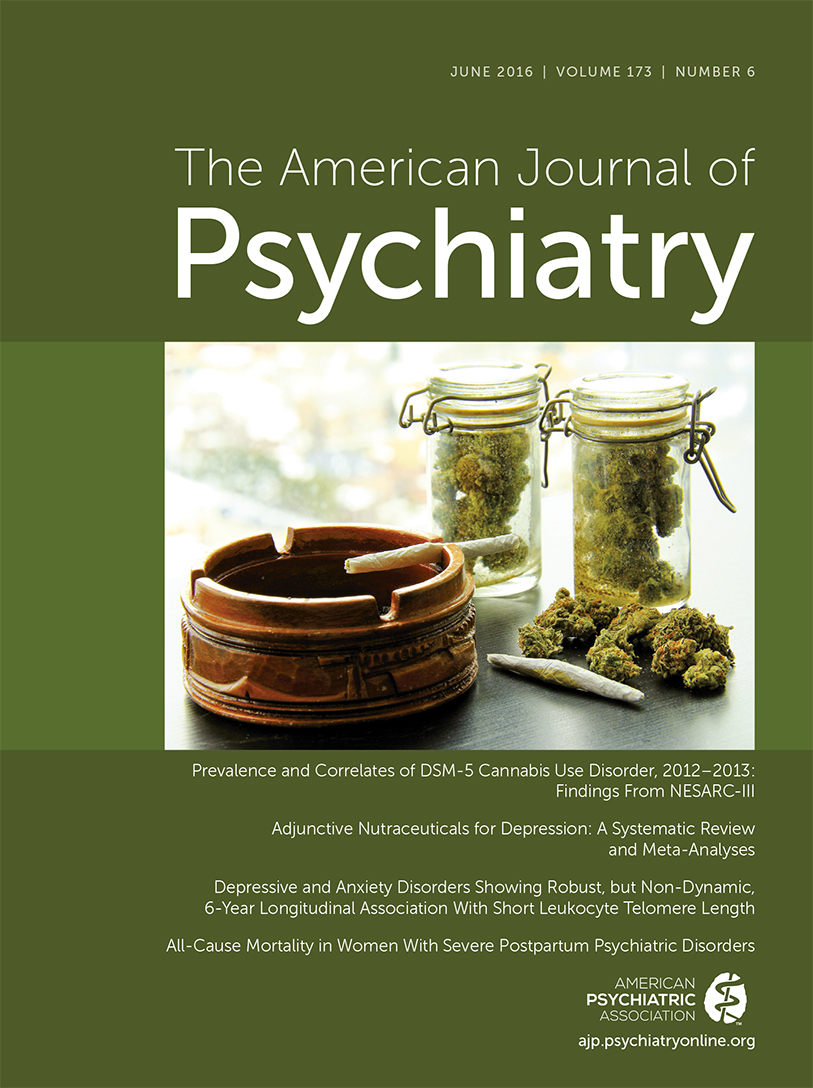Prevalence and Correlates of DSM-5 Cannabis Use Disorder, 2012-2013: Findings from the National Epidemiologic Survey on Alcohol and Related Conditions–III
Abstract
Objective:
Attitudes toward marijuana are changing, the prevalence of DSM-IV cannabis use disorder has increased, and DSM-5 modified the cannabis use disorder criteria. Therefore, updated information is needed on the prevalence, demographic characteristics, psychiatric comorbidity, disability, and treatment for DSM-5 cannabis use disorder.
Method:
In 2012–2013, 36,309 participants ≥18 years old were interviewed in the National Epidemiologic Survey on Alcohol and Related Conditions–III. Psychiatric and substance use disorders were assessed with the Alcohol Use Disorders and Associated Disabilities Interview Schedule–5.
Results:
The prevalences of 12-month and lifetime cannabis use disorder were 2.5% and 6.3%. Among those with 12-month and lifetime diagnoses, the mean days of marijuana use per year were 225.3 (SE=5.7) and 274.2 (SE=3.8). The odds of 12-month and lifetime cannabis use disorder were higher for men, Native Americans, unmarried individuals, those with low incomes, and young adults (e.g., among those age 18–24 years versus ≥45: odds ratio for 12-month disorder, 7.2; 95% confidence interval, 5.5–9.5). Cannabis use disorder was associated with other substance use disorders, affective disorders, anxiety, and personality disorders. Twelve-month cannabis use disorder was associated with disability. As disorder severity increased, virtually all associations became stronger. Only 13.2% with lifetime cannabis use disorder participated in 12-step programs or professional treatment.
Conclusions:
DSM-5 cannabis use disorder is prevalent, associated with comorbidity and disability, and largely untreated. Findings suggest the need to improve prevention and educate the public, professionals, and policy makers about possible harms associated with cannabis use disorders and available interventions.



